This recipe comes from my grandmother and is the way we’ve been making easter bread in Ukraine for many years. The recipe features a sky high brioche bread stuffed with plump raisins and topped with a sweet frosting.
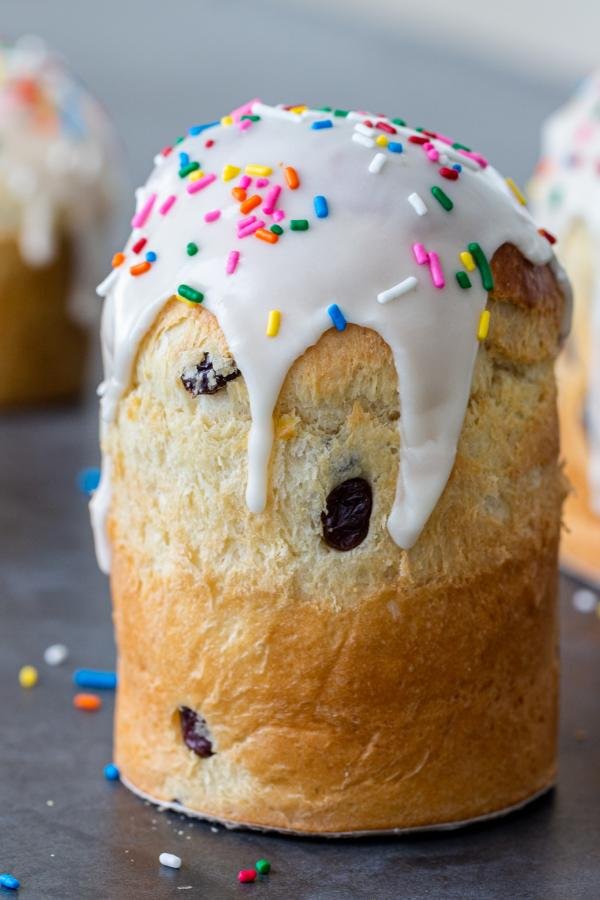
If you’re in Easter mode, check out our guide on Ukrainian Easter Eggs (with Grandma’s Secrets) and our recipe for hot cross buns.
Paska bread is almost too pretty to eat. Baked tall and festively decorated with frosting and sprinkles, it’s always the centerpiece of any easter celebration. In this paska recipe, you’ll learn all you need to know to bake it just like my family has for many years.
Tool Tip: You’ll need panettone molds or a springform cake pan to make this recipe. The recipes yields 4 large paskas when I use these paper molds.
What is Paska Bread?
Ukrainian Easter bread, or paska, is a tall, cylindrical egg bread that’s speckled with raisins and baked in festive paper molds (much like Italian panettone or Russian kulich). Slightly sweet, it’s often eaten early in the day at church alongside other baked goods like chocolate babka and brioche braids. Below, find a breakdown of the flavor, texture, and time it takes to make our version of this classic Easter bread recipe.
- Flavor: The flavor of paska bread is a balance of slightly sweet, eggy brioche and tart, juicy raisins. This is all capped off with a super sweet powdered sugar frosting.
- Texture: The texture of paska is light and fluffy. When baked right, it will almost melt in your mouth!
- Time: From start to finish, this paska recipe takes 3 hours to make.
Reader Tip: One of our readers suggested a great tip if you don’t love raisins. Instead, she left out the raisins and after baking the bread used a straw to poke holes in it and then stuffed it with Nutella! It was a hit!
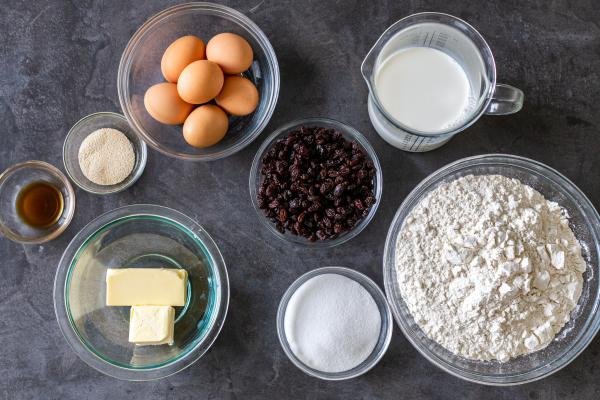
Paska Bread Video
How to Make Paska Bread from Scratch
Making Easter paska bread requires a bit of patience, but if you follow the instructions closely you’ll be golden.
- Make the Bread Base: In the bowl of a stand mixer, combine the warmed milk, active dry yeast and two cups of all-purpose flour. Cover the bowl with a towel. Set it aside in a warm place for 30 minutes.
- Make the Egg Mixtures: Next, separate the egg yolks and egg whites into different bowls. Whisk the yolks with 1 cup sugar and beat the whites until they reach stiff peaks.
- Finish Building the Dough: Mix the sweet egg yolks into the dough, followed by the butter, vanilla extract, and foamy egg whites. Next, mix the rest of the flour into the dough in small portions. Knead the dough until elastic and sticky.
- Allow the Dough to Rise: Cover the dough with a towel and set it aside to rise for 30 minutes.
- Soak & Add the Raisins: Next, soak the raisins in warm water for 15 minutes. Drain the raisins and mix them in to the dough. Allow the dough to rise for another 30 minutes. (Skip the raisins if you don’t love them, or substitute with nuts or chocolate chips!)
- Bake the Paska Bread: Fill each paper bread mold halfway with dough. Cover the molds with a towel and allow them to rise for 30 more minutes. Bake the bread at 350°F in the oven for about 30 minutes.
- Make the Glaze: In a medium bowl, whisk the powdered sugar and milk together until smooth. Using a piping bag, drizzle the frosting all over the top of the bread. If you’d like, add some sprinkles right on top. Enjoy!
Don’t have a stand mixer? No problem! You can make paska bread the old-fashioned way with a wooden spoon and a well-floured surface for kneading.






Tips for The Perfect Paska Bread
Some handy tips will help you make the most authentic paska bread.
- Use high-protein, high-quality flour. If you can get your hands on Canadian flour, do it! It tends to have a higher protein count and makes for such a killer texture. (BobsRemill works great!)
- Adjust the flour if necessary. Depending on the kind of flour you use, you may need to add a little more. This dough should be on the sticky side but it shouldn’t be runny.
- Get the milk to the right temperature to activate the yeast. To activate the yeast, the milk temperature should be at around 110 °F – 120 °F. If you have a candy thermometer, use it to help you gauge when the milk is ready.
- Don’t skip the soak. Soaking the raisins for a quick 15 minutes before adding them to the dough will bring such a wonderful texture and moisture to the bread. Don’t skip this step!
- Pay attention to the size of panettone molds. Depending on the size of paper molds you use, the amount of paskas this recipe yields will vary. (Make sure you aren’t buying tiny, cupcake sized panettone molds!) I like to use ones that are roughly 4×6 inches in size, this typically yields 3-4 paska breads. I like using these or these paper molds.
- Fill the paper molds halfway. Don’t be tempted to overfill the molds, the dough will rise quite a bit during the final proof and while baking. Avoid your bread from overflowing by only filling the molds halfway.
- Make the dough in advance. Split your prep by completing steps 1-6 in advance, and then baking the next day. You can do this by adding the raisins or other mix-ins in as desired in step 6, then covering the dough and refrigerating it. Make sure it’s in a large enough bowl or container as it will continue to rise overnight. When ready to bake, divide the dough amongst the paper molds or pans, and let it proof for at least 60 minutes before baking.
Hot Tip: All-purpose flour will work for this recipe, but the best option we’ve used is Bob’s Red Mill Bread Flour. So worth it for the texture and taste!
Storing & Freezing Best Practices
Whether you have leftovers to store or you want to freeze some paska for a rainy day, here’s all you need to know.
- Storing: To keep paska on hand for up to 4 days, store them in an airtight container on the counter to prevent the bread from drying out. If you want them to keep for even longer, transfer the container to the fridge.
- Freezing: You can freeze paska for up to 3 months in an airtight container. For best results, make sure to keep them unfrosted before popping them in the freezer. To thaw the bread, place it on the counter for a couple of hours.
FAQ
Can you bake paska bread in a loaf pan?
Yes, you can bake paska bread in a greased loaf pan instead of a paper mold. This bread can be baked in just about any pan. If you use a cupcake pan, you will get about 24-30 mini paska breads.
Can you use coffee cans for the paska bread molds?
Yes, you can use coffee cans for the paska bread molds. This is actually the old-fashioned way to make this Easter bread. Oftentimes, bakers will use different sized cans to create many different sizes of the breads. This makes for such a cool presentation!
Can you use panettone molds for paska bread?
You can absolutely use panettone molds for paska bread. They’re pretty much identical and are often used interchangeably.
Can I use a muffin or cupcake tin for paska bread?
If you use a muffin or cupcake tin, this recipe will yield about 24-30 paskas. Bake for about 20 minutes, or until golden brown on top.
Should you use bleached or unbleached flour for paska bread?
Unbleached flour is the best choice for baking paska bread. It has a denser, tougher texture that makes the bread that much more decadent.
Other Sweet Bread Recipes to Try
- Easy Brioche Bread – Braided sweet bread
- Best Challah Bread Recipe – Sweet, fluffy Jewish bread
- Whole Wheat Banana Bread Recipe – Hearty banana bread
- Honey Wheat Bread – Slightly sweet honey bread
Recipe
Ingredients
Bread
- 2 cups lukewarm milk
- 1 1/2 tbsp active dry yeast
- 6 cups all-purpose flour
- 6 eggs
- 1 cup sugar
- 2 tsp vanilla extract
- 1 cup Unsalted Butter melted
- 2 cup raisins
Topping
- 2 cups powdered sugar
- 3 tbsp milk
Instructions
Baking the Paska Bread
- In the bowl of a stand mixer, combine the lukewarm milk with the yeast and two cups of flour. Cover the bowl with a towel and set it aside in a warm place for about 30 minutes.
- While the dough is rising, separate the egg yolks from the egg whites and place them in separate bowls. Whisk the egg yolks with 1 cup of sugar. Then, beat the egg whites until they turn foamy and reach stiff peaks.
- Mix the egg yolk mixture into the dough, followed by the melted butter, vanilla extract, and foamy egg whites.
- Mix the rest of the flour into the dough in small portions. Using the dough hook attachment, knead the dough until it becomes elastic, smooth, and a bit sticky.
- Cover the dough with a towel and set it aside to rise for 30 minutes. Note: the dough will be a bit soft and runny, this is normal. Don’t be tempted to add extra flour.
- While the dough is rising, soak the raisins in warm water for 15 minutes. Drain the raisins and mix them into the dough. Cover the bowl with a towel and let the dough rise for 30 more minutes.
- With oiled hands, fill up each paska bread mold about halfway with the dough. Cover the molds with a towel and allow them to rise for 30 more minutes.
- Bake the bread at 350°F for about 30 minutes, depending on the size of your paska. Let the bread cool completely at room temperature.
Making the Paska Bread Topping
- In a medium bowl, whisk the powdered sugar and milk together until smooth. Transfer the frosting into a piping bag or a plastic storage bag with one of the edges snipped off.
- Drizzle the glaze along the sides of the bread and completely cover the tops. Optionally, add some sprinkles on top. Enjoy!
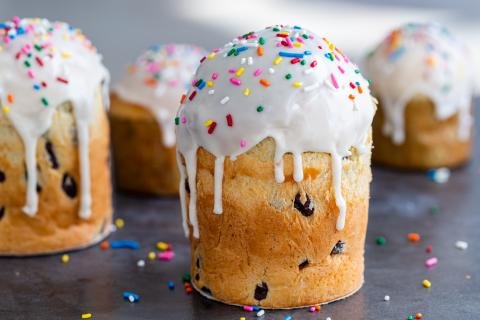
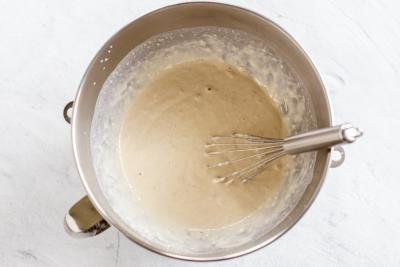
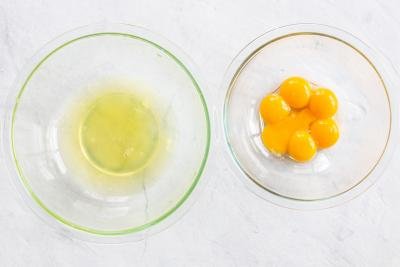
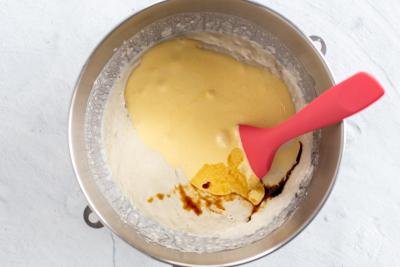


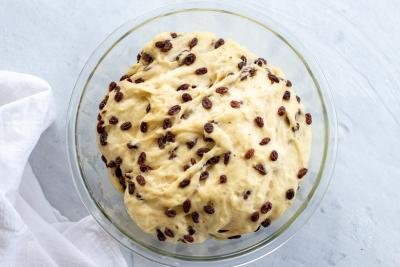
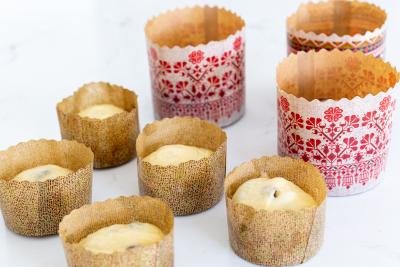
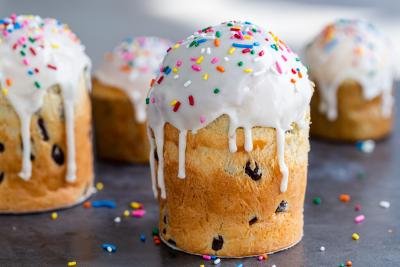
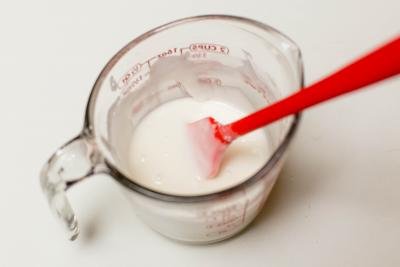

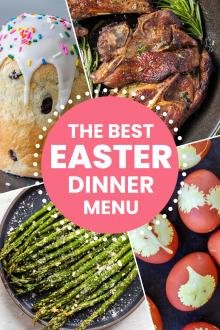



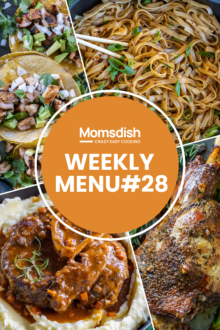

INSTRUCTION TOO LONG WENT SOMEWHERE ELSE FOR A RECIPE
Hi Rich- I include a lot of details and tips about the recipe so that readers can get the best result! You can use the "jump to recipe" button to skip straight to the ingredients/steps.
I’m so thrilled I tried your paska recipe! It’s the best paska I’ve ever had. I’m Armenian, and our paska recipes are quite different. I’ve always wanted to try making one, but I’ve been afraid because the recipes we have are so long, intimidating, and time-consuming. I used your recipe and added my own personal touch. I replaced the raisins with candied orange 🍊 peels, added saffron, and a dash of green cardamom. Thank you so much for your recipe! From now on, I’ll be making my own paska for myself and my family. I also use King Arthur’s all-purpose flour, Lucerne, whole milk, and unsalted butter. Thank you again for bringing back wonderful memories of my childhood.
This absolutely made my day—thank you so much for sharing! I'm so honored that you chose my paska recipe as your starting point, and your personal touches sound incredible—the candied orange peel, saffron, and cardamom must have made it truly special.
It means a lot to hear that it brought back memories of your childhood—food has such a magical way of connecting us to where we come from. I'm thrilled it turned out so well for you and that you’ll be making it again for your family. Wishing you many sweet bakes and happy moments ahead!
I can’t wait to try this! Hopefully I can find some tall paper molds.
Just an FYI- Bob’s Red Mill is a US company, based in Portland, Oregon. (I was like, what’s Canadian flour?) I used to live just up the street from them. Definitely the best flours you can buy!
Hey Cheryl! Yes, Bob’s Red Mill is from Portland! But you can definitely use Canadian flour—any of their brands are great because of the high protein content. Enjoy!
Used 1/2 the recipe & golden raisins. Absolutely 👌👌👌👌
Hey Lily, I am so happy that you got to make it. Thanks for leaving your review!
I have a smaller Cuisinart mixer. Can I reduce the recipe by 1/2 to accommodate the size of my mixer?
Hi Sherri, do you mean hand mixer? If thats the case, I would say kneading by hand would work better. But if it has a dough hook, I think it would be ok. Hope it works out!
Hey, how can i check to make sure its fully cooked through? Its also my first time ever making it. Im exited to see how it turns out!
Hey Rachel, great question! If you have a thermometer, I’d check the internal temperature—it should read between 190°F and 200°F once the bread is fully cooked. Also, look for a nice golden color on the outside. You can use a toothpick too: insert it into the thickest part of the bread, and if it comes out clean or with just a few dry crumbs, it's done.
Hope these tips help—let me know how the bread turns out!
So delicious!!!
Happy to hear you love it!
My Grandmother always used saffron in her Paska but unfortunately I do not have her recipe. How much saffron would I use & how is it prepped? When would I add it to the dough? Thank you so much. I’m looking forward to trying this recipe for the first time.
That’s such a lovely memory—your grandmother’s Paska must have been amazing. 💛 Saffron adds such a special touch.
My grandma didn't use saffron, and I personally haven't experimented with it. But I think if you were to add it to this recipe, I'd use a small pinch, about 1/4 teaspoon of saffron threads. Lightly crush them and steep them in the warm milk -this gives the saffron time to deepen both the flavor and that beautiful golden color. Then just add the infused milk in with your other wet ingredients when making the dough. I think this would be a good place to start experimenting with it and then you can make tweaks going forward.
I hope this first batch brings a bit of your grandmother’s magic back to life! Let me know how it turns out.
Hello, I noticed there is no mention of salt in your recipes.
I don't add salt to this recipe, but feel free to add a little bit if that's what you prefer.
How can you make this recipe if you dont have paper molds or tin cans? Thank you
You can look on youtube how to make molds from parchment paper and foil
Hey Carleen, I use molds, but perhaps you can try a small springform pan or cake pan, however they would need to be tall enough, so that might be tricky trying to find the ideal size.
Hallo, welche Tasse nimmst du ml/gramm?
Hello, I use cups typically and US units. But near the ingredients, you can switch the measurements to metric. I hope this helps!
How far in advance can you make this and have it stay fresh?
Hey Jordan, You can prep the dough in advance and bake so it's fresh (can read more about this on the blog). Or, baked it stays fresh up to four days at room temperature. I personally prefer to make it as close as possible to serving, or the night before.
Any idea if this would work with non-dairy milk, like soy or coconut milk? And non diary butter?
Hi! I haven’t tested this recipe with non-dairy substitutions, but if you give it a try, I’d love to hear how it goes. I’d recommend soy milk as it’s closest to dairy milk in protein content, which helps with structure. For butter, go with a good-quality non-dairy alternative that has a similar texture to regular butter—nothing too oily. Fingers crossed it works beautifully!
I used oatmilk and it turned out great! For butter I used dairy free earth balance butter sticks. Both substitutes worked great for me!
Wow, that’s such great feedback—thank you for letting us know! It’ll be helpful for others too!
I used a Bundt pan and some of the bread stuck to the sides. Will either butter or spay with baking spray next time I make it
Good idea! A generous coat of butter or baking spray should definitely help. You could also try dusting it with a little flour after greasing for extra insurance. Hope it turns out perfect next time!
Hello. I added the ride of one orange to the batter as a fantastic taste and closer to my mom‘s recipe lol. My sisters,nieces nephew and mom really liked it.
Oh yum! Thanks for sharing -that's a great idea!
I made mini paskas in a muffin tin, at high elevation (7,000 ft.), with no adjustments. They came out perfect!
I'm so happy to hear they turned out perfectly! Thanks for sharing specifics about the elevations. We some times get questions about that so it's good to know!
Hello Natalya, I was getting ready to make the bread but I thought I was supposed to use bread flour? The recipe actually calls for ap flour? I use bread flour for almost EVERYTHING..I'm still going to use it so I hope it still turns out okay. Fingers crossed 🤞
Hi Bea, you may need to adjust the amount of flour but bread flour should work. Please report back on the amount of flour you used and how it went. Thank you!
I followed the recipe to the t. The dough came out cake batter consistency, I poured it the molds halfway and put it the oven for 30 min. The molds got overflown and could’ve ruined my oven, but at least I baked them on the tray, so the only thing that got ruined is my Easter Bread 😢
Hey LW, What a bummer! I'm sorry to hear this. The dough shouldn't turn out like cake batter consistency, so something went wrong. I'm curious what type of flour did you use?
Wegmans Organic All Purpose Flour
I would recommend trying some more flour to get more dough like consistency next time.
Thank you for the advice! I’ll try adding more flour next year!😊
I made mini Easter breads using muffin tin molds. They were not only cute, each bite had the delicious glaze, but they turned out so delicious. It took about 5 minutes less to bake at the same temperature. I liked the tins with parchment paper liners. It's a wonderful recipe!
Thanks for sharing Viktoriya. Mini Easter breads sound so cute!
Thank you Natalya! My husband, of Ukrainian descent, says that this was the best Paska he has ever tasted. I made it into loafs rather than cylinders and it was great. Doing it that way requires a little bit more icing though. Or spread it thinner.
Thank you again.
I love that you found our recipe and your husband enjoyed it! Thank you for sharing!
Thank you so much for this wonderful recipe - I made 3 batches, 1 plain, 1 with raisins and 1 with chocolate chips…they tasted amazing!
My ukrainian friends said I now qualify for citizenship:)
I love that! Sounds like you've impressed your friends. 🙂 I will have to try it sometime with chocolate chips.
Fantastic recipe!! Just like my great-grandmas and it brought back so many memories! Thank you!
Thank you Laura! I love that this bread is so nostalgic for so many!
Measurements seem off and instructions are vague. It hardly mentions what size panettone mold you’re using and if it’s based on that then that majorly affects bake time. If you’re going to do this, make sure you know what a paska needs to look like when it’s done and don’t open your oven until you think it’s done cause it will cave. (Ps. The first I opened the oven was 35 minutes so it wasn’t even before her time suggestion was up)
Hi Sylvia, thank you for sharing your feedback. Dis you see under our tips we have links and sizes listed? How large was your mold? I am surprised that they cave after 35 minutes.
Hi! Is there no salt in this formula? Thanks! Aiyana
Hi Aiyana, you can add a sprinkle of salt but I dont. People say it makes a huge difference and I dont see a difference.
Did you by any chance make this recipe using starter? if yes, do you mind sharing how much starter you put? Thank you!
Hey Olesea, I have not experimented with a sourdough paska yet. If you try it out, please report back!
Hi, Natasha!
I love this recipe and made it several times already. I do want to try making small ones using muffin tins and parchment paper liners. About how many would I get? Also, what would be the temperature I have to bake them at?
Thanks 😊
Hey Viktoriya, I'm not exactly sure how many you would get. I don't make them that small, so I'd love for you to report back once you made them! I would bake them at the same temperature, just keep an eye on them till they get golden in color.
Could I halved the recipe?
You sure can! Enjoy!
Hi Natalya, thank you for your wonderful recipe. Would you please tell me if I want to use only yolks how should I modify yr recipe?❤️
Hey, I personally have not tried this recipe using only yolks. I wouldn't recommend it either because the texture will be different. However, if you do experiment, please report back!
I made this yesterday othe first time and absolutely love it! Your directions are spot on and easy to follow and the end result is beautiful and delicious!Thank you for sharing the recipe
Oh yay! I'm thrilled you tried Paska for the first time and it was a success. Thanks for sharing Becky.
How long would I have to bake the Paska, if I used 3" diameter Corningware dishes
Hey Lori, It’s hard to recommend an exact time because they all bake slightly differently. I would watch for them to turn lightly golden brown. The most accurate way to know if they’re done baking is to check the internal temperature. Once it reaches 190 degree F, it’s done. I hope this helps!